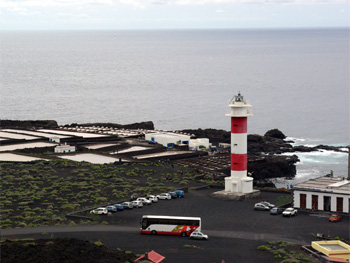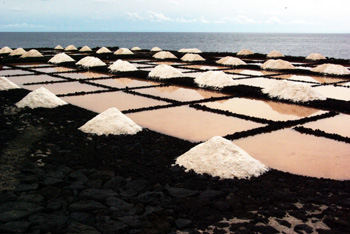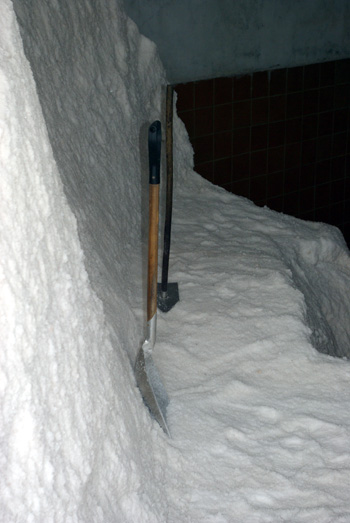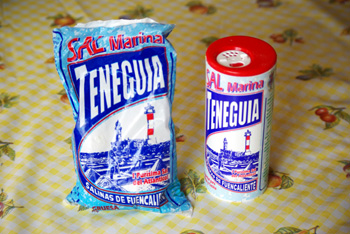
Well actually, it's the salt of the sea. Almost all salt on La Palma is sea salt, made at the southernmost tip of the island. You can visit the saltpans by taking a number 31 bus from the centre of Los Canarios to the lighthouse (
Faro in Spanish). There's a bus every two hours for most of the day.

It's a simple process. The salt water is pumped into shallow ponds and left to dry in the sun. As the water evaporates, the salt starts to crystallise out on the bottom, and the workers scrape it into piles to drain and dry in the sun.
When it's mostly dry, it's brought into the shed for a final dry with warm air. From close to, you can here the machinery groaning away as though it's got indigestion.

Finally, it's put into packets. You can buy coarse salt (
sal gorda or
gruesa) for cooking or fine salt (
sal fina) for the table. Being sea-salt it has more potassium, magnesium, calcium and iodine, and less sodium.

While you're there, it's worth looking at the Interpretation Centre for the marine reserve, which is in the older lighthouse. They have an audio-visual presentation available in several languages, including English. And it's the only such place I've seen with a memorable floor.
Labels: Canaries, Canary islands, La Palma, salt, salt pan
Bookmark with:
 Del.icio.us
Del.icio.us
 Digg
Digg
 Reddit
Reddit
 Facebook
Facebook
 Furl It
Furl It
 Newsvine
Newsvine








